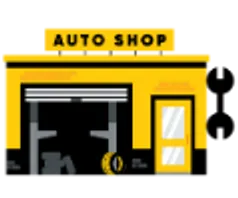
Trusted repairers
All workshops are MTA approved, so you know your car's in safe hands. All work is covered by our 6-month / 10,000km warranty.

NZ's #1 automotive repair booking site.






If you’re driving a manual then you know that the most important pedal in the car is on the far left.
In order to operate your clutch, you need the clutch pedal and cable. The clutch cable is what makes the downward pressure on the pedal engage the clutch in the transmission. Over time as this cable is stretched and tightened as it works the clutch fork, it may need some adjustment to get the perfect pedal travel.
When you press down on the pedal, the distance of travel before the clutch is engaged is all due to the clutch cable.
The clutch cable is connected to the lever on the clutch pedal. It then travels through the firewall and is navigated to the transmission housing. It is connected to the clutch fork, which controls the engagement and disengagement of the clutch plate.
Basically a throttle cable, but for your clutch.
Without the clutch cable you would be unable to connect or disconnect gears to the engine. Without the cable you would be unable to transfer power to the wheels.
If the clutch cable is too loose, then you may find that you cannot get the clutch fully engaged. This can lead to grinding gears and transmission damage, which costs a lot more than a simple cable adjustment.
As you drive a manual, you understand the need for clutch feel. You’ll start to notice that your foot has to travel a lot more before feeling the clutch engage.
It might not be a slow process too, if you’ve had the transmission worked on you might notice it immediately.
The opposite can happen too, when the cable has been adjusted too far. Then you will notice that the vehicle can’t get into reverse and the clutch may be disengaged all the time.
It’s a job that you can do yourself, but as with most crucial components, it’s best left to the pro’s.
- Test the clutch to find the ‘bite’ point and see if it needs adjusting
- Find where the clutch cable connects to the fork in the transmission
- Loosen the cable from the fork or disconnect it from the locknut completely
- Tighten or loosen the nut on the threaded part of the cable in the bracket mounted to the firewall
- Do this until you find the point where you want the clutch to engage
- Reconnect the cable to the fork if it was undone
- Make sure that there is not excessive pressure on the fork
- Press the clutch in and out to check that it is all working correctly
- Tighten or loosen the cable in small increments, checking with the clutch pedal feel
- Cable is fully reconnected to all components and locknut is secured
- Test drive with variable load and making sure that the reverse gear is easy to engage
A cable adjustment can be done relatively simply depending on the accessibility.
You can expect a cable adjustment cost to be in the range of $50 to $150 depending on the amount and cost of the mechanics labour
It’s not a service that is required often, most mechanics will adjust it whenever replacing the clutch or other components that affect the clutch.
You can adjust your cable depending on when you see symptoms cropping up
A broken clutch cable will need replacement.
If the clutch cable requires adjustment you should do so. If left unfixed, it can cause wear to the gears in the transmission as well as wearing down your clutch and flywheel.
You can find a Dodge Clutch Cable Adjustment mechanic near me with My Auto Shop

View other services
Vehicle Makes
Why book with My Auto Shop?

All workshops are MTA approved, so you know your car's in safe hands. All work is covered by our 6-month / 10,000km warranty.
We provide transparent, upfront pricing and quotes for hundreds of services and repairs. Book with confidence.

Get prices and book online 24/7. We come to you. Easy as.
With hundreds of MTA approved garages nationwide, we have one just for you
View all garages